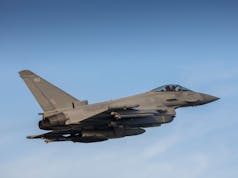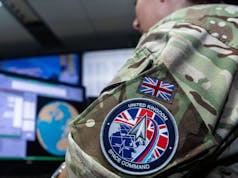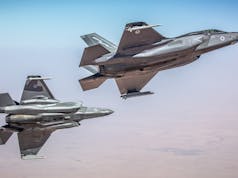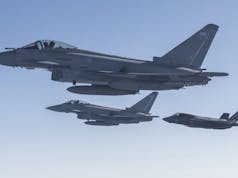The Ministry of Defence has confirmed it is monitoring Russia’s deployment of advanced missile systems, including the Kinzhal and Zircon, but has not disclosed any formal assessment of their impact.
In a written question tabled on 29 August, Conservative MP Ben Obese-Jecty asked what assessment had been made of the threat posed by the two hypersonic systems.
Responding on 6 September, Defence Minister Luke Pollard said: “The Department is aware of and continues to monitor the impact of the Russian use of these and other missile types.”
No further details were provided on the ministry’s analysis or the implications for UK and NATO defences. The Kinzhal and Zircon, both touted by Moscow as cutting-edge hypersonic weapons, have been employed during the Ukraine conflict and are viewed as central to Russia’s strategic deterrent messaging.
The missiles
The Kh-47M2 Kinzhal, known by NATO as the AS-24 Killjoy, is a Russian air-launched ballistic missile that entered service in 2017. It is carried by high-speed aircraft such as the MiG-31K interceptor, Tu-22M3M bomber, and reportedly the Su-34, with future plans for the Su-57. The missile is large and heavy at around 4,300 kg and over 7 metres in length. It is powered by a solid-propellant rocket motor, guided by an inertial navigation system with mid-course updates, and steered by cropped delta fins. The Kinzhal is capable of carrying either a conventional high-explosive warhead or a low-yield nuclear warhead, giving it both tactical and strategic utility.
Performance figures place its range at up to 2,000 km when factoring in the launching aircraft’s reach, and its top speed is reported to be around Mach 10. Russia has promoted the Kinzhal as part of its suite of advanced strategic weapons, and it was first shown publicly in 2018 by President Vladimir Putin. Operationally, the missile has been deployed from bases in Russia’s Southern and Western Military Districts. It was used in combat during the Russian invasion of Ukraine beginning in 2022, with the first successful interception occurring in May 2023 after the arrival of U.S. Patriot air defence batteries.
Despite Russian claims of revolutionary capability, outside assessments are more sceptical. Chinese analysts, reviewing the missile’s performance in Ukraine, argued that the Kinzhal does not qualify as a true hypersonic weapon because it follows a predictable ballistic trajectory and cannot manoeuvre at hypersonic speeds. This, they suggest, makes it more vulnerable to interception than advertised. Questions have also been raised about its accuracy in operational use, tempering the initial impression that it represented a decisive advance in Russian missile technology.
Now, the 3M22 Zircon, also known as Tsirkon and designated by NATO as SS-N-33, is a Russian hypersonic cruise missile developed by NPO Mashinostroyeniya. It is designed to strike both naval and land targets and can be launched from submarines, surface ships, and in the future, land-based platforms. The missile is scramjet-powered, fuelled by Detsilin-M, and has a length of about 9 metres with a diameter of 60 cm. Entering service with the Russian Navy in January 2023, Zircon is part of Russia’s modernisation of long-range precision strike systems.
Performance figures place the Zircon at speeds of up to Mach 9 and altitudes around 28 km, giving it significant reach and survivability against conventional air defences. Russian sources claim an effective operational range exceeding 1,000 km, with shorter ranges reported for low-level flight profiles and longer ones for semi-ballistic trajectories. These figures remain debated, with most reliable estimates placing its range between 400 and 1,000 km. The missile is launched from the standardised 3S-14 vertical launch system, already fitted to modern Russian frigates and submarines, making it adaptable across multiple naval platforms.
Operationally, Zircon has been promoted as a carrier-killer due to its speed, manoeuvrability, and precision. Russian media argue that its ability to strike large naval assets like aircraft carriers could shift the balance at sea by overwhelming defences. However, independent analysts caution that claims of maximum range and accuracy are difficult to verify, and much of the available information comes from Russian sources.














ULYA, Where are Ya ?
I love to see your comments here.
Hello Halfwit,
I am still here reading.
I have nothing to add about these missiles, both sides media have much to say so pick your propaganda.
Maybe we will have better idea if coalition of the willing become more than a cheer leading team and do something useful.
I will wait until later tonight to see all the expert comments here, Mr Bell is in usual fine form to start the race.
Much more interesting things have been happening east that interest me more.
Have you decided if I am woman/man/ork or troll?
Hope you are well
Good response time and comments, I’m still here too but bloody knackered after being on my knees all weekend, It’s not easy being a Newbie Builder ! Luckily we managed to miss all the rain and stuff and we now have a weather tight Porch.
Hopefully no missiles will be heading this way because I ain’t building it again.
“Woman/Man/Ork or Troll seems like a small list of options, we in the West have dozens now.
Sorry for slow reply.
God willing things stay in current limited format but I am not hopeful but we will both do our duty for our motherlands. Any way there is no happy for anyone regardless. If i remember quote correctly “Better to jaw jaw than war war”. So many lost opportunities to avoid this.
I hope your knees feel better.
Could they be intercepted by something cheaper than Patriot?
It really depends on what you’re trying to defend. The challenge associated with defending against hypersonic missiles is their speed, but not in the way many people initially assume. Naturally, a hypersonic missile represents a challenging target for the interceptor, but this isn’t insurmountable. If reports are to be believed, Kinzhal missiles have been intercepted by Patriot and SAMP/T launchers in Ukraine. However, this is predominantly because these systems are defending a fixed point – usually Kyiv – and are based at the target point. This means that the interceptor can travel in a straight path directly to the target missile, which makes interception much easier. This form of defence is known variably as terminal-phase defence, or more commonly as point defence (defence of a fixed point). It’s major disadvantage is that you cannot protect a wide area. Systems like Patriot reportedly have roughly 30km effective range against some ballistic (and presumably hypersonic missiles).
This job requires a less capable interceptor – theoretically, any modern medium-range interceptor could perform this role. Think Patriot PAC-3MSE, Aster-30 Block 0/1, ESSM Block II, Buk M3, HHQ-9B, et cetera. Missiles with this performance could be made comparatively cheaply, as evidenced by the PAC-3CRI. However, these cannot be used for wide-area air defence.
Using a single interceptor system for wide-area air defence is a far more challenging prospect. This is where the speed of a hypersonic missile poses a much greater threat. Against a crossing target (eg, a missile that has not been fired towards the interceptor launch vehicle, but instead simply passes beside it), traditional medium-range interceptors are far less effective, because the turning manoeuvre and flight velocity required to enact an intercept are beyond the capability of most in-service systems. Interceptor velocity is far less relevant in a point-defence situation, but when defending an area, the velocity of the interceptor needs to be close to, or to match the target’s. Against ballistic missiles, wide-area air defence is the mission set of only a few current systems, namely the SM-3, Arrow III, HQ-19 and S-500. These are all very expensive, given the performance required to target ballistic missiles in their midcourse phases.
There are currently no systems in service that are capable of wide-area air defence against hypersonics, save perhaps the Russian S-500, though information is scarce and the recent combat performance of other Russian systems had led many Western analysts to doubt the S-500 system. Some developments include the American/Japanese Glide Phase Interceptor, the European Aquila programme (HYDIS), and the German-led HYDEF programme.
So, to answer your question – a cheaper missile than Patriot could theoretically be used in the terminal-phase/point-defence role, but if you’re aiming to defend a larger area (without simply putting a Patriot equivalent at every possible target), then a more capable, and more expensive system is required.
And yet the OSINT reports indicate both systems fired into Ukraine have accuracy around the 0-5km.
Meaning very very unlikely to be steerable onto a manoeuvring target like a surface ship and even against static targets they aren’t very accurate. In fact they are so inaccurate when fired into Ukraine and crashed down onto a farm or field the Ukrainian military have been perplexed as to which target were they aiming for.
So more Russian hot air and BS. It’s just propaganda and the west should review the weapons performance, develop counter measures against them both but definitely not being afraid of these systems.
“accuracy around the 0-5km”
The fact that people can take these kinds of claims seriously simply beggars belief.
You would have thought that after the (admittedly hilarious) washing machine and shovel claims, they would have learned their lesson, but no – they just continue to double down!
A comprehensive reply. Thanks!
No worries! 🙂